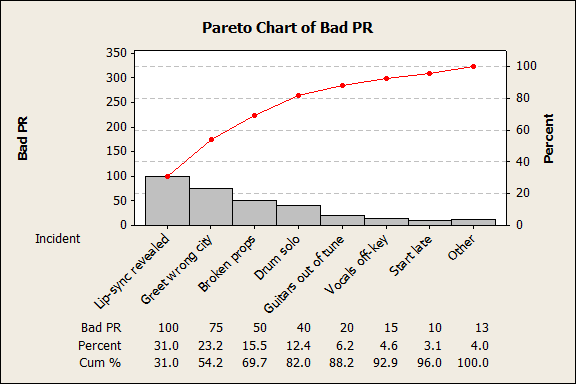
Just as all bar graphs are not histograms, they are also not Pareto charts. The answer is that while a bar graph displays data in bars, the bars of a histogram represent continuous data for a specific range that are measured in terms of frequencies and intervals thus, the bars are connected to each other. PMP credential holders may wonder why if the histogram is a bar graph it has its own special name and it included in the PMP certification exam. What Makes the Histogram Such a Special Bar Graph Instead of an overwhelming list of numbers, the histogram conveys critical information with an image. The PMP histogram provides information about a process in terms of time and the occurrence of specific aspects. The visual components of a histogram convey meaning, so project managers need to know what the proportions of each part mean. In those settings the tool is included as a means to determine productivity and asses a process. For project managers who know the “Total Quality Management” philosophy and/or the “Six Sigma” project management methodology, histograms are familiar. Additionally, from the lens of a PMP credential holder, a resource histogram is a specific use of the tool using project resource data to provide insight into allocation over time. In that way histograms are a powerful quality tool. The histogram, a bar graph, provides a means to display variable data measured on a continuous scale for metrics such as time, temperature, weight, and speed. The resource histogram is specifically a bar chart used for displaying the specific amounts of time that a particular resource is scheduled to be worked on over a predetermined and specific time period (source: Project Management Knowledge Definitions )įor project managers without formal training in statistics or mathematical computations, it is likely that last definition that sparks the “ah-ha!” moment. Consider these definitions of the term histogram but from the lens of a project manager or PMP credential holder:Ī diagram consisting of rectangles whose area is proportional to the frequency of a variable and whose width is equal to the class interval (source: Oxford Languages via Google ) It also has application in projects and is included in the body of knowledge assessed for the PMP exam. How is a histogram used? The histogram is used for statistical analysis in financial and industrial settings.

And while it is a bar graph, it is also a specific visual representation of data that conveys meaning in how it is structured. As first glance, one not trained in PMP quality tools may think that it is merely a bar graph. The American Society of Quality (ASQ) lists the histogram as not only one of the seven quality tools, but the most frequently used graph to show frequency distributions. Note that he is credited with the term “histogram” not the actual tool itself which likely was already in existence. The term histogram is credited to Karl Pearson (1857 – 1936), an English mathematician and bio-statistician.

The PMP certification exam may include questions asking to identify one of the seven tools or more scenario-based questions about the use of a quality tool. When preparing for the PMP certification exam, or as a PMP certification holder, you will know of the “Seven Tools of Quality” credited to Kaoru Ishikawa, a professor of engineering at Tokyo University and the father of “quality circles.” The seven quality tools are:Īs the basic level, the type of project work, the data available, and the question to be answered will determine which tool, or even combination of tools, is the best fit.
Pareto chart vs ishikawa diagram pmi professional#
Histograms are a statistical tool included in the Project Management Professional (PMP)® certification exam as they are used by project managers to plan and manage quality.


 0 kommentar(er)
0 kommentar(er)
